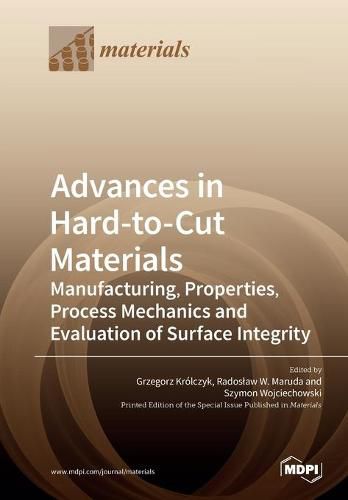Readings Newsletter
Become a Readings Member to make your shopping experience even easier.
Sign in or sign up for free!
You’re not far away from qualifying for FREE standard shipping within Australia
You’ve qualified for FREE standard shipping within Australia
The cart is loading…






This title is printed to order. This book may have been self-published. If so, we cannot guarantee the quality of the content. In the main most books will have gone through the editing process however some may not. We therefore suggest that you be aware of this before ordering this book. If in doubt check either the author or publisher’s details as we are unable to accept any returns unless they are faulty. Please contact us if you have any questions.
The rapid growth of modern industry has resulted in a growing demand for construction materials with excellent operational properties. However, the improved features of these materials can significantly hinder their manufacture and, therefore, they can be defined as hard-to-cut. The main difficulties during the manufacturing/processing of hard-to-cut materials are attributed especially to their high hardness and abrasion resistance, high strength at room or elevated temperatures, increased thermal conductivity, as well as resistance to oxidation and corrosion. Nowadays, the group of hard-to-cut materials is extensive and still expanding, which is attributed to the development of a novel manufacturing techniques (e.g., additive technologies). Currently, the group of hard-to-cut materials mainly includes hardened and stainless steels, titanium, cobalt and nickel alloys, composites, ceramics, as well as the hard clads fabricated by additive techniques. This Special Issue, Advances in Hard-to-Cut Materials: Manufacturing, Properties, Process Mechanics and Evaluation of Surface Integrity , provides the collection of research papers regarding the various problems correlated with hard-to-cut materials. The analysis of these studies reveals the primary directions regarding the developments in manufacturing methods, characterization, and optimization of hard-to-cut materials.
$9.00 standard shipping within Australia
FREE standard shipping within Australia for orders over $100.00
Express & International shipping calculated at checkout
This title is printed to order. This book may have been self-published. If so, we cannot guarantee the quality of the content. In the main most books will have gone through the editing process however some may not. We therefore suggest that you be aware of this before ordering this book. If in doubt check either the author or publisher’s details as we are unable to accept any returns unless they are faulty. Please contact us if you have any questions.
The rapid growth of modern industry has resulted in a growing demand for construction materials with excellent operational properties. However, the improved features of these materials can significantly hinder their manufacture and, therefore, they can be defined as hard-to-cut. The main difficulties during the manufacturing/processing of hard-to-cut materials are attributed especially to their high hardness and abrasion resistance, high strength at room or elevated temperatures, increased thermal conductivity, as well as resistance to oxidation and corrosion. Nowadays, the group of hard-to-cut materials is extensive and still expanding, which is attributed to the development of a novel manufacturing techniques (e.g., additive technologies). Currently, the group of hard-to-cut materials mainly includes hardened and stainless steels, titanium, cobalt and nickel alloys, composites, ceramics, as well as the hard clads fabricated by additive techniques. This Special Issue, Advances in Hard-to-Cut Materials: Manufacturing, Properties, Process Mechanics and Evaluation of Surface Integrity , provides the collection of research papers regarding the various problems correlated with hard-to-cut materials. The analysis of these studies reveals the primary directions regarding the developments in manufacturing methods, characterization, and optimization of hard-to-cut materials.